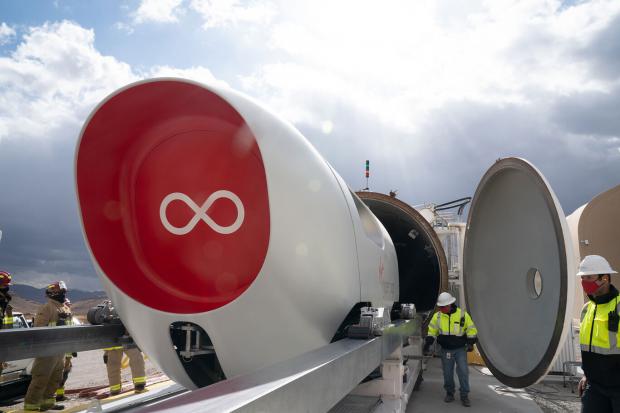
Breaking News
6.8 SPC vs. 300 Blackout: Powering Up the AR Platform
 Autism Study By McCullough Foundation Begins New Era of Free Scientific Inquiry
Autism Study By McCullough Foundation Begins New Era of Free Scientific Inquiry
 REVOLUTION DAY 8: Libertarians JOIN The Revolution
REVOLUTION DAY 8: Libertarians JOIN The Revolution
 US Government and Westinghouse $80bn Nuclear Reactor Deal
US Government and Westinghouse $80bn Nuclear Reactor Deal
Top Tech News
 Graphene Dream Becomes a Reality as Miracle Material Enters Production for Better Chips, Batteries
Graphene Dream Becomes a Reality as Miracle Material Enters Production for Better Chips, Batteries
 Virtual Fencing May Allow Thousands More Cattle to Be Ranched on Land Rather Than in Barns
Virtual Fencing May Allow Thousands More Cattle to Be Ranched on Land Rather Than in Barns
 Prominent Personalities Sign Letter Seeking Ban On 'Development Of Superintelligence'
Prominent Personalities Sign Letter Seeking Ban On 'Development Of Superintelligence'
 Why 'Mirror Life' Is Causing Some Genetic Scientists To Freak Out
Why 'Mirror Life' Is Causing Some Genetic Scientists To Freak Out
 Retina e-paper promises screens 'visually indistinguishable from reality'
Retina e-paper promises screens 'visually indistinguishable from reality'
 Scientists baffled as interstellar visitor appears to reverse thrust before vanishing behind the sun
Scientists baffled as interstellar visitor appears to reverse thrust before vanishing behind the sun
 Future of Satellite of Direct to Cellphone
Future of Satellite of Direct to Cellphone
 Amazon goes nuclear with new modular reactor plant
Amazon goes nuclear with new modular reactor plant
 China Is Making 800-Mile EV Batteries. Here's Why America Can't Have Them
China Is Making 800-Mile EV Batteries. Here's Why America Can't Have Them
Virgin Hyperloop explains how passenger pods will travel at 670mph...

Virgin Hyperloop's cutting-edge technology can 'comfortably, safely and quietly' shuttle customers along at speeds of up to 670 miles per hour, according to a new promo video from the transportation start-up.
A clip released on Monday explains how passenger pods accelerate through a near-vacuum via electric propulsion, gliding along without actually touching the track thanks to magnetic levitation that limits aerodynamic drag.
According to the promo, the company's proprietary design makes it ten times faster than the fastest mag-lev trains operating today in in Japan, China and South Korea.
'It unveils details on our 'smart vehicle, dumb road' commercial system architecture,' a representative said of the clip, 'including the on-board levitation engines, propulsion engines, and high-power batteries that have never been publicly shown.'
It also sings the praises of the trains as an efficient, economical and sustainable mode of transportation with zero carbon emissions.
Virgin Hyperloop's 670 mph speed is ten times faster than a typical commercial train and three times as fast as current high-speed rail. (The top speed for Amtrak's Acela trains is about 150 mph.)
It's even faster than most commercial jets, which reach cruising speeds of about 460 to 575 mph.
Unlike commercial jets, the Hyperloop would have zero direct carbon emissions.
Hyperloop pods would travel in clusters but aren't connected like traditional railroad cars, and wouldn't have to be directed at the same destination.

 China Innovates: Transforming Sand into Paper
China Innovates: Transforming Sand into Paper

